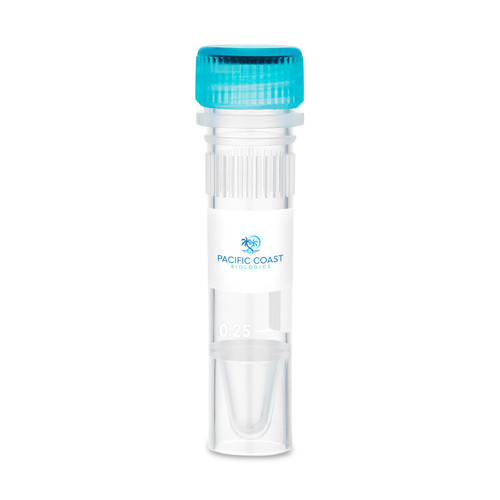Human EGF (Epidermal Growth Factor) is a recombinant protein composed of 53 amino acids with 3 intramolecular disulfide-bonds. It is mapped to human chromosome 4q25-27 and is expressed in a variety of organs, including the kidney, salivary gland, cerebrum, and prostate. Human EGF is a powerful URG (urogastrone) hormone, which has been proven to be effective in stimulating the growth of skin cells, among other functions. This human EGF is a 6.2kDa globular protein, making it easy to use for a variety of scientific studies and applications.
EGF has been used in the culture medium for the maintenance of MCF10A cells (human mammary epithelial cells).
EGF is a potent growth factor that stimulates the proliferation of various epidermal and epithelial cells. Additionally, EGF has been shown to inhibit gastric secretion, and to be involved in wound healing. EGF signals through a receptor known as c-erbB, which is a class I tyrosine kinase receptor. This receptor also binds with TGF (transforming growth factor)-α and VGF (vaccinia virus growth factor). Mutation in the EGF gene might be associated with risk of non- small cell lung adenocarcinoma. It is also involved in anaplastic thyroid cancer and renal hypomagnesemia. It controls cell differentiation and neurotrophic processes.
| Product Specifications | |
| Species | Human |
| Published Species | Human, Monkey, Mouse, Pig, Rat |
| Expression System | E. coli |
| Amino acid sequence |
NSDSECPLSH DGYCLHDGVC MYIEALDKYA CNCVVGYIGE RCQYRDLKWW ELR
|
| Molecular weight | 6.2 kDa |
| Class | Recombinant |
| Type | Protein |
| Purity |
≥ 98% by SDS-PAGE gel and HPLC analyses.
|
| Endotoxin concentration | <0.1 EU/µg |
| Activity |
The ED50 was determined by a cell proliferation assay using balb/c 3T3 cells is ≤ 0.1 ng/ml, corresponding to a specific activity of ≥ 1 x 10^7 units/mg.
|
| Conjugate | Unconjugate |
| Form | Lyophilized |
| Contains |
no preservative
|
| Storage conditions | -20°C |
CAUTION
For Research Use Only. Not for use in diagnostic procedures.

















